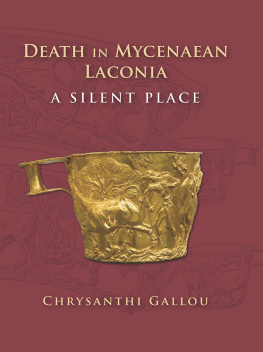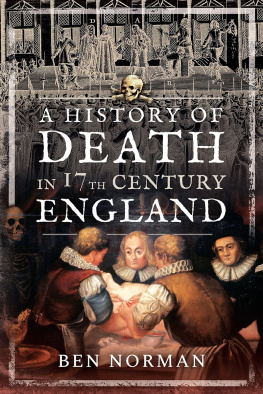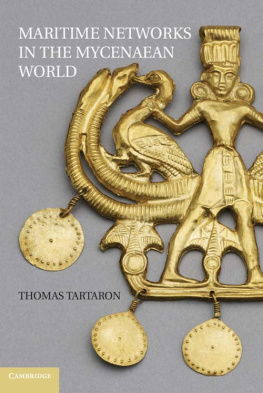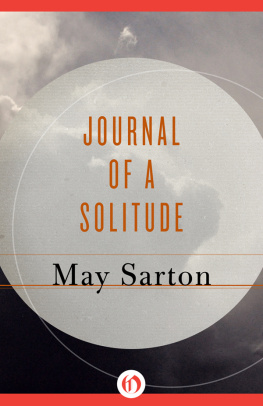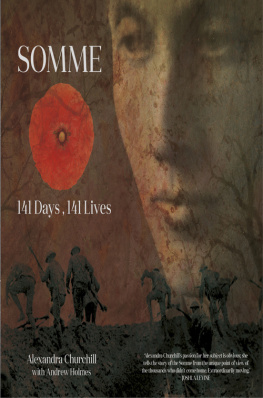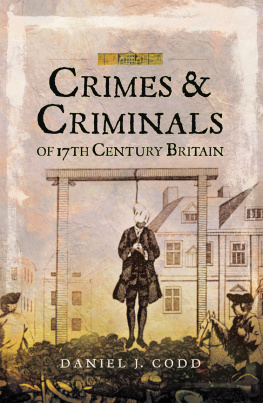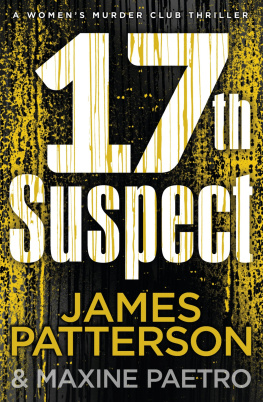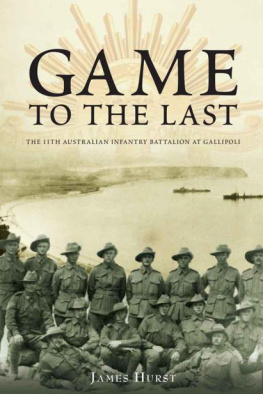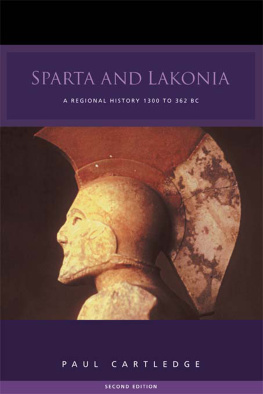Gallou Chrysanthi - Death in Mycenaean Lakonia (17th to 11th C. BC)
Here you can read online Gallou Chrysanthi - Death in Mycenaean Lakonia (17th to 11th C. BC) full text of the book (entire story) in english for free. Download pdf and epub, get meaning, cover and reviews about this ebook. year: 2020, publisher: Oxbow Books, Limited, genre: Home and family. Description of the work, (preface) as well as reviews are available. Best literature library LitArk.com created for fans of good reading and offers a wide selection of genres:
Romance novel
Science fiction
Adventure
Detective
Science
History
Home and family
Prose
Art
Politics
Computer
Non-fiction
Religion
Business
Children
Humor
Choose a favorite category and find really read worthwhile books. Enjoy immersion in the world of imagination, feel the emotions of the characters or learn something new for yourself, make an fascinating discovery.
- Book:Death in Mycenaean Lakonia (17th to 11th C. BC)
- Author:
- Publisher:Oxbow Books, Limited
- Genre:
- Year:2020
- Rating:5 / 5
- Favourites:Add to favourites
- Your mark:
- 100
- 1
- 2
- 3
- 4
- 5
Death in Mycenaean Lakonia (17th to 11th C. BC): summary, description and annotation
We offer to read an annotation, description, summary or preface (depends on what the author of the book "Death in Mycenaean Lakonia (17th to 11th C. BC)" wrote himself). If you haven't found the necessary information about the book — write in the comments, we will try to find it.
Death in Mycenaean Lakonia (17th to 11th C. BC) — read online for free the complete book (whole text) full work
Below is the text of the book, divided by pages. System saving the place of the last page read, allows you to conveniently read the book "Death in Mycenaean Lakonia (17th to 11th C. BC)" online for free, without having to search again every time where you left off. Put a bookmark, and you can go to the page where you finished reading at any time.
Font size:
Interval:
Bookmark:

DEATH IN MYCENAEAN LACONIA
A SILENT PLACE
CHRYSANTHI GALLOU

Published in the United Kingdom in 2020 by
OXBOW BOOKS
The Old Music Hall, 106108 Cowley Road, Oxford, OX4 1JE
and in the United States by
OXBOW BOOKS
1950 Lawrence Road, Havertown, PA 19083
Oxbow Books and the author 2020
Hardcover Edition: ISBN 978-1-78925-242-2
Digital Edition: ISBN 978-1-78925-243-9
Kindle Edition: ISBN 978-1-78925-244-6
A CIP record for this book is available from the British Library
Library of Congress Control Number: 2019952535
All rights reserved. No part of this book may be reproduced or transmitted in any form or by any means, electronic or mechanical including photocopying, recording or by any information storage and retrieval system, without permission from the publisher in writing.
For a complete list of Oxbow titles, please contact:
UNITED KINGDOM
Oxbow Books
Telephone (01865) 241249
Email:
www.oxbowbooks.com
UNITED STATES OF AMERICA
Oxbow Books
Telephone (610) 853-9131, Fax (610) 853-9146
Email:
www.casemateacademic.com/oxbow
Oxbow Books is part of the Casemate Group
Front cover : Drawing and image of the gold cup NMA 1759 from the tholos tomb at Vapheio (Wikimedia Commons)
Back cover : (right) The stirrup jar SM 5419 from one of the chamber tombs at Epidavros Limera (photo by Chrysanthi Gallou); (left) View of the burial chamber of the (now submerged) chamber tomb 2 at Pavlopetri (courtesy of the Pavlopetri Underwater Archaeology Project)
To my husband Sarantos
for eternity
, , , .
, , , , , .
, .
( , 2017)
This book has been a long time in the making. It started as a postdoctoral project focusing primarily on the chamber tombs at Epidavros Limera and the prehistory of the Malea peninsula and subsequently developed to treat in a systematic way the archaeology of death in Mycenaean Laconia. The study of the archaeological material from the chamber tombs at Epidavros Limera proved an extremely challenging task for many reasons, which I do not wish to reiterate here. At the end, though, this intellectual journey has rewarded me with a deeper knowledge of Laconian prehistory and with many good friends and colleagues who accompanied me, in one way or the other, during this archaeological quest.
All official permits for the study of the archaeological material from Epidavros Limera were obtained from the Greek Ministry of Culture, and it is with particular pleasure that I acknowledge my gratitude to them for the facilitation of the project and for fostering the development of fruitful collaborations with colleagues in the Ephorate of Antiquities of Laconia (EF.A.L.; f. E EPCA). Mrs Anastasia Panagiotopoulou, Director Emerita of the EF.A.L., not only enabled my study in the Archaeological Museum of Sparta, put Professor Drandakis logbook from the 1953 excavations at Epidavros Limera at my disposal, discussed with me Professor Christous finds from Agios Georgios Voion and assisted my visits at the sites treated in this book while she was the director of the Ephorate, she has also provided wholeheartedly her friendship and support through good and bad times. Access to the archaeological material from Epidavros Limera in the Archaeological Museum of Sparta was kindly facilitated by Dr Maria Tsouli (Curator, EF.A.L.) and by the archaeological guards; I would like to extend my warmest thanks to them all. In the Archaeological Museum of Sparta the conservation of the pottery from Epidavros Limera was undertaken by Mrs Roula Grigoriou (Greek Ministry of Culture), the drawings by Mr Tasos Papadogkonas (Greek Ministry of Culture) and the photographs by Mr Vasileios Georgiadis (professional photographer, Sparti) I thank them for the excellent collaboration. Particular warm thanks are owed to my PhD student Mr Fabio Saccoccio (University of Nottingham) who kindly undertook the task to produce the map with the burial sites and few new pottery drawings, and to edit all pottery drawings and prepare them for the final publication. DTM data services provided by the OpenTopography Facility with support from the National Science Foundation under NSF Award Numbers 1557484, 1557319 and 1557330.
I am immensely indebted to the Archaeological Society of Athens and its Archivist Ms Ioanna Ninou for putting Professor Christous logbook of the 1956 excavations at Epidavros Limera at my disposal, and to the late Professor Angelos Delivorrias, Professor Anthony Harding (University of Exeter), the late Professor Richard Hope Simpson (Queens University, Kingston), Professor George Huxley (Queens University Belfast), the British School at Athens, the then BSA Director Professor James Whitley and the BSA Archivist Mrs Amalia Kakissis, for granting me permission to study the archaeological material collected during the British Surveys on the Malea peninsula and from the 1968 survey at Pavlopetri. Many thanks are owed to the staff of the Hallward Library at the University of Nottingham, the Library of the Hellenic Society in London, the Library of the British School at Athens, the Central Public Library of Sparta, and to the staff of the School of Humanities at the University of Nottingham, in particular Mrs Amanda Samuels and Mrs Tracy Sisson, for their valuable help and support in practical matters.
To my visits at some of the sites discussed in this book I was assisted or guided by Mrs Mina Grigorea-Mpourtzikaki (Monemvasia), Mr Yannis Kafantaris (Elika), Mr Dimitris Kalogerakos (Pantanassa), Mr Andreas Katzilieris (Agios Georgios Voion), Professor Pantelis Konstantinakos (University of Peloponnese; Neapolis Voion), Mr Evangelos Kountourogiannis (Tsegianika Voion), Mr Nikolaos Lekakis (Agios Ioannis Movemvasias), the late Athanasios Maltezos (Melathria), Mr Panagiotis Markos (Agios Georgios Voion), Mr Charalampos Mpillinis (Neapolis Voion), Mr Yannis Psarrakis (Kambos Voion), Mr Ioannis Skagos or Latzas (Agios Ioannis Monemvasias) and Mr Nikolaos Skagos (Agios Ioannis Monemvasias). I thank them for offering their time and knowledge of the local topography.
This monograph is the fruit of research facilitated through outstanding financial support received from the University of Nottingham (through a Faculty of Arts Early Career Research Fellowship and through a Centre for Spartan and Peloponnesian Postdoctoral Fellowship), the J.F. Costopoulos Foundation, the Institute for the Study of Aegean Prehistory (INSTAP), the Mediterranean Archaeological Trust (MAT), the Robert Kiln Charitable Trust and the British Academy (overseas conference grant). The research and compilation of the manuscript for its final publication were made possible through a generous grant from the Shelby White Leon Levy Program for Archaeological Publications. I must also thank Dr Julie Gardiner (Publisher), Ms Jessica Scott (Editor) and the staff that work behind the scenes in Oxbow Books for their patience and ready cooperation during the preparation of the manuscript.
My research has benefited greatly from discussions with many colleagues, notably Dr Georgia Alexopoulou (Greek Ministry of Culture), Dr Konstantinos Angelopoulos (I.G.M.E.), Dr Emilia Banou (University of Peloponnese), Dr Yannis Bassiakos (National Center for Scientific Research Demokritos), Dr Gioulika Christakopoulou (Greek Ministry of Culture), Dr Dave Conlin (Submerged Resources Center, National Park Service, Santa Fe), Professor Joost Crouwel (University of Amsterdam), Dr Massimo Cultraro (Consiglio Nazionale delle Ricerche and University of Palermo), Dr Katie Demakopoulou (Director Emerita, Greek Ministry of Culture), Mrs Ioanna Efstathiou-Manolakou (Greek Ministry of Culture), Dr Yannis Galanakis (University of Cambridge), Dr Nicholas Flemming (University of Southampton), Dr Eddy Faber (University of Bradford), the late Dr Ioannis P. Georgoulis (I.G.M.E.), Dr Jon Henderson (University of Nottingham), Professor Julian Henderson (University of Nottingham), Professor Richard Janko (University of Michigan), Dr Eleni Kourinou (Director Emerita, Greek Ministry of Culture), Dr Evangelia Kyriatzi (BSA Fitch Laboratory), Professor Irene Lemos (University of Oxford), the late Professor Chris Mee (University of Liverpool), Dr Michalis Petropoulos (Director Emeritus, Greek Ministry of Culture), Dr Stella Katsarou-Tzeveleki (Ministry of Culture), Mr Adonis Kyrou (Spetses Museum; Advisor, Niarchos Foundation), Dr Ioannis Moschos (Greek Ministry of Culture), Dr Konstantinos Paschalidis (Greek Ministry of Culture), Professor Yannis Pikoulas (University of Thessaly), Mr Elias Spondylis (Greek Ministry of Culture), Mr Leonidas Souchleris (Greek Ministry of Culture), Mr Dimitris Vagias (I.G.M.E.) and Mr Stelios Zapheiropoulos (I.G.M.E.). Dr Angelopoulos, Dr Conlin, Dr Cultraro, Dr Galanakis, Dr Georgoulis, Professor Janko, Dr Katsarou-Tzeveleki and Mr Souchleris kindly provided offprints and shared information on unpublished aspects of their research too. I am also grateful to Professor Athanasios Papadopoulos (University of Ioannina) and Dr Evangelia Papadopoulou for kindly allowing me to reproduce from the late Professor Litsa Kontorli-Papadopoulous unpublished PhD thesis. Conference papers and invited lectures on the material presented in this book have been delivered at the Universities of California, Berkeley, Oxford, Liverpool, Sheffield, Peloponnese and Nottingham, the American School of Classical Studies at Athens, the British School at Athens and the Netherlands Institute at Athens, and I am indebted to the audiences for the fruitful discussions and feedback. The responsibility of all views and mistakes of fact or judgement in this book remains, of course, entirely mine.
Font size:
Interval:
Bookmark:
Similar books «Death in Mycenaean Lakonia (17th to 11th C. BC)»
Look at similar books to Death in Mycenaean Lakonia (17th to 11th C. BC). We have selected literature similar in name and meaning in the hope of providing readers with more options to find new, interesting, not yet read works.
Discussion, reviews of the book Death in Mycenaean Lakonia (17th to 11th C. BC) and just readers' own opinions. Leave your comments, write what you think about the work, its meaning or the main characters. Specify what exactly you liked and what you didn't like, and why you think so.

